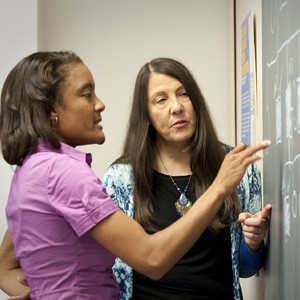Supercomputing

From lengthy DNA sequences, to recordings of how millions of neurons are firing, to attempts to determine the shapes of complex molecules, many modern scientific datasets are extremely large and require massive computing power to analyze. In this era of ‘big data,’ it is essential that researchers in the biomedical sciences have easy access to robust computational capacity to enable data-driven scientific discovery.
To empower its scientists to pursue projects that generate such large quantities of data, the IRP provides access to a central large-scale high-performance computational (HPC) resource called Biowulf. Managed and supported by the NIH’s Center for Information Technology (CIT), this system is designed for general-purpose scientific computing, has high availability and high data durability, and is freely accessible for use by all IRP scientists. Not only is Biowulf the largest of the IRP’s shared research resources, it also now has the distinction of being the first supercomputer completely dedicated to advancing biomedical research listed among the 100 most powerful computers in the world, coming in at number 66 in the November 2017 Top500.org rankings and firmly placing the IRP as a world leader in the biomedical computing space.

One of the most important aspects of our HPC program is the support provided by the incredibly dedicated staff of scientists and engineers in CIT’s High Performance Computing Services, who provide their expertise and support to several thousand IRP scientists — from installing, documenting, and maintaining hundreds of scientific applications to providing training classes and one-on-one ‘coffee shop consults’ that enable IRP scientists to make best use of their world-class HPC environment.
We invite you to learn more about the IRP’s HPC program — and how this resource continues to enable our researchers to push the boundaries of modern biomedical science — by visiting CIT’s high-performance computing website, at hpc.nih.gov.
Continue Exploring the IRP
This page was last updated on Tuesday, January 11, 2022


